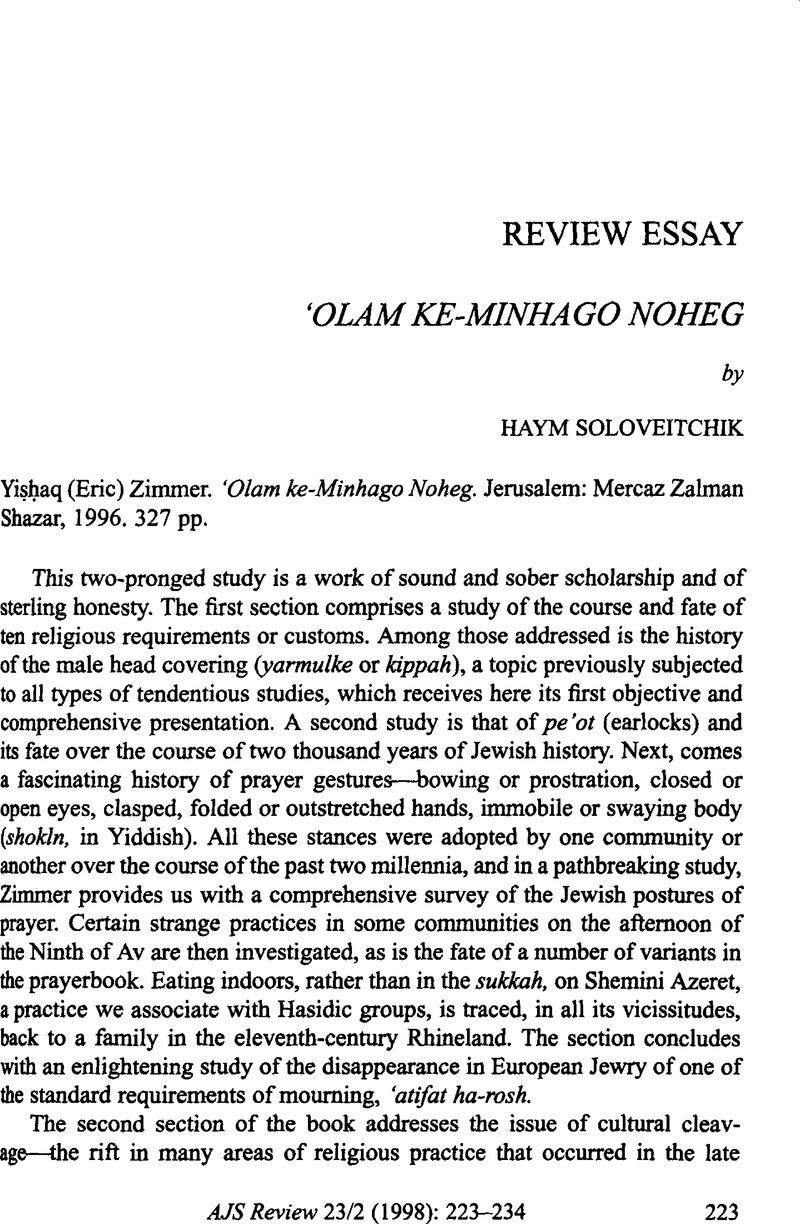Published online by Cambridge University Press: 15 October 2009

1. See AJS Review 1 (1976): 349.
2. TeshubotR. Meir of Rothenburg, ed. Lemberg, no. 386
3. Ibid., no. 476.
4. Cf. Henri Gross, Gallia Judaica, p. 482.
5. A half century ago, Daniel Goldschmidt established that the Sefer ha-Minhagim of R. Abraham Klausner was based heavily on that of Paltiel, R. Hayyim, which he discovered and published (Kiryat Sefer, 23 [1947–48]: 73–83).Google Scholar Recently, Simhah Emanuel has contended that the Sefer ha-Minhagim of Hayyim Paltiel is itself based on a prior one of R. Hezekiah of Magdeburg found in a Bodley manuscript (Neubauer, 1150). If so, the influential rite of R. Klausner would be entirely German. As Emanuel analyzed the provenance of the Bodley manuscript rather than its contents are the practices there mandated of French or German usage?–only the publication of the manuscript will settle the issue. (Emanuel, Simhah, “The Lost Books of the Tosafists” [Hebrew], Ph.D. diss., Hebrew University, 1993, pp. 263–264.)Google Scholar
6. See now the fine M. A. thesis of Reiner, Rami (written under the direction of Ta-Shema, Y.), “Rabbenu Tarn: His Teachers and German Pupils” (Hebrew), Hebrew University, 1997, pp. 82–98.Google Scholar
7. R. Samson of Falaise and R. Peres of Corbeil (d. 1297–99) are the first writers to mention the practice, though it clearly antedates their compositions. Both R. Mordecai ben Hillel(Pesahim, 588) and R.Meir ha-Cohen (Haggahot Maimuniyyot [Constantinople, [1509] Hilkhot Hames u-Masah 5:1) know of it through the work of R. Peres, which they cite. The writings of R. Meir of Rothenburg and R. Asher (Rosh) make no mention of it, and it is equally absent from the code of R. Alexander Susslein, the Sefer ha-Agudah, the last German work written before the Plague.
8. Teshuvot ha-Bah ha-Yeshanot, no. 79.